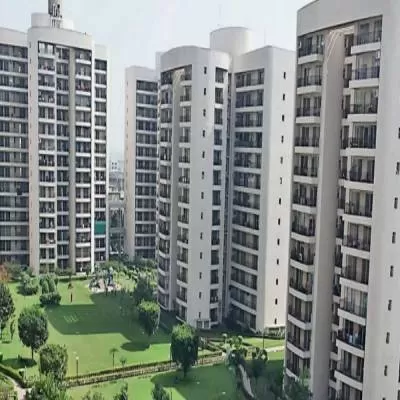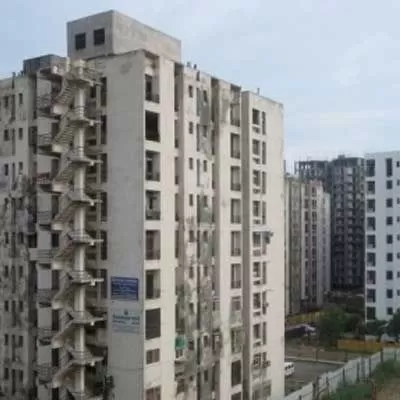- Home
- Real Estate
- Riding the Wave

Riding the Wave
Prefabrication is the future of construction in India, asserts <span style="font-weight: bold;">PRADEEP NAIR.</span> <p></p> <p> From 'building it brick by brick' to 'build it before you build it', transformative technologies led primarily by prefabrication are now beginning to blur the lines between the construction and manufacturing sectors in India. Slated to have the world's third largest construction industry by 2025, India is witnessing a high uptake of modular techniques with its construction sector slowly transforming and behaving more like the business of manufacturing. </p> <p>At the 20th PRAGATI meeting held in June, Prime Minister Narendra Modi gave fresh directives to the Ministry of Housing and Urban Affairs to begin conducting workshops with global companies offering 3D technologies. This, in turn, will massively enable the government's affordable housing mission and ensure timely completion of all ongoing projects. </p> <p> <span style="font-weight: bold;">Embracing innovation</span><br /> Autodesk sees this as a huge opportunity and believes the switch to prefab construction, a surge in modular as a trend, and the rise of advanced technology platforms such as building information modelling (BIM) in construction and architecture are set to change the face of the entire AEC sector over the next couple of years. The past two decades are testament to the fact that from supercomputing and space to pharma and biotech, India has always taken the lead in embracing innovation and adopting technology across sectors and industries. </p> <p>Today, the way things are being made is causing wide-scale disruption across industries, including the construction of buildings and infrastructure - Future of Manufacturing Things (FoMT). Riding the prefabrication wave and clocking a CAGR of 7-8 per cent, the Indian construction sector stands at the threshold of a huge opportunity to leapfrog into FoMT, and prefabrication or modular construction remain at the heart of it.</p> <p> <span style="font-weight: bold;">Process of manufacturing buildings </span><br /> As a manufacturing process, prefabrication is a method of construction that includes assembling components of a structure at a separate production site and then transporting complete or partial assemblies to the actual site where the structure is being constructed. It is basically a combination of superior design with modern high-performance components and quality-controlled manufacturing procedures. Therefore, prefabrication not just ensures faster completion of a project but brings down its overall cost. </p> <p>From residential high-rises in New York to low-cost hotels in Europe, prefabrication allows engineers to blur the lines between design and manufacturing process and create products for the future. Over the next few years, India will feature among the fastest-growing countries in terms of construction output, making technology intervention a key component of this. </p> <p> <span style="font-weight: bold;">Barriers and challenges in adoption of prefab</span><br /> Globally, prefabrication has already seen significant adoption by the construction sector, with the Burj Khalifa in Dubai and the Sydney Opera House being two of the finest examples. According to a report published by Technavio, a global technology research and advisory firm, the global prefabricated construction market is expected to grow at a CAGR of 6-7 per cent until 2020. However, in India the uptake of modular technologies continues to remain slow and prefabricated buildings comprise only 1 per cent of the country's $100-billion real-estate market. </p> <p>The main reason is that prefabrication as a technology is still battling a mindset blockade in India, with most developers averse to investing in modular methods of construction and hesitant to incorporate prefabrication in their new and ongoing projects. The Indian construction marketplace today stands plagued by constricted space, overcrowding, delay in completion and clearance snarls. </p> <p>In addition, the sector continues to be labour-intensive and heavily reliant on traditional construction practices. While the cost of switching over to prefab is a lot higher upfront, in the long term prefabrication can give developers the benefit of time, safety and quality, enabling them to churn out buildings faster and capture the demand. </p> <p> <span style="font-weight: bold;">Rise of BIM, green buildings and lean construction </span><br /> The surge of prefab and modular as a 'trend' is significantly tied to the rise of advanced technology platforms such as BIM. The application of BIM in prefabricated construction has multiple benefits; while it helps ease the design flow, it also provides data-centric information based on design, specification and construction issues. Additionally, BIM can enable developers to track time, errors and cost. </p> <p>Also, the industry recognises the contribution of modular technologies to meeting green goals. Apart from waste reduction benefits, working off-site reduces habitat and site disturbance and protects raw materials from rain and extreme weather, contributing to the development of a more adaptive building. Similarly, lean construction, the new buzzword these days, mainly focuses on eliminating waste, leading to significant savings in both schedules and budgets.</p> <p> <span style="font-weight: bold;">Confluence of manufacturing and construction </span><br /> The uptake of transformative technologies was slow in the initial years as majority of tech innovation was focussed on manufacturing construction equipment. However, over the past few years, the process of construction and design has become the focal point. It is now officially the age of manufactured buildings, where constructing three floors a day, or 57 floors in 19 days as built by China's Broad Sustainable Building (BSB) company, is no longer an aspirational feat but an easily achievable target.</p> <p>Most of the delay in construction happens at Stage-1 owing to faulty design. 3D printing and designing everything on the cloud takes care of that problem with most iteration happening on the cloud itself. </p> <p>Big data and cloud computing are expected to have an immense impact on the design and management of construction projects. More frequent use of 3D printing technology, increased applications coupled with various kinds of materials and project types could completely change the process of physical delivery in the coming years. </p> <p>The next decade belongs to prefabrication, with the Indian construction sector expected to expand to a size of $1 trillion and contribute over 15 per cent to the overall GDP. The government's ambitious project of building 20 million affordable houses and 98 smart cities by 2022 will see a further confluence of the construction and manufacturing industries to create an ecosystem for increased innovation and technology adoption. Thus, prefabrication will be a key enabler in mission 'Digital India' and play a vital role in all infrastructural development. </p> <p> 'Prefabrication will be a key enabler in mission 'Digital India' and play a vital role in all infrastructural development.'</p> <p> <span style="font-weight: bold;">About the author: <br /> Pradeep Nair, Managing Director, Autodesk India and SAARC, </span>is responsible for the overall strategy and growth of Autodesk's business across India and the SAARC region, covering all the company's industries, product segments and strategic partnerships. Nair has proven experience in leading and managing sales, channels, marketing and technical teams, driving double-digit growth, and ensuring consistent client satisfaction. </p>




















